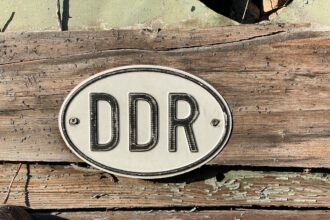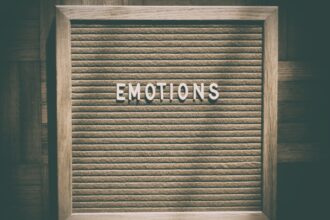Derealization and depersonalization are psychological phenomena that can leave you feeling detached from reality and your own self. Derealization refers to the sensation that your surroundings are not real or are distorted, as if you are observing the world through a foggy lens. You might find that familiar places seem strange or that people appear as if they are characters in a movie rather than real individuals.
This disconnection can be unsettling, leading to feelings of confusion and anxiety. On the other hand, depersonalization involves a sense of detachment from your own thoughts, feelings, or sense of identity. You may feel as though you are an observer of your own life, watching yourself from a distance.
This can manifest as a feeling of being disconnected from your body or emotions, making it challenging to engage fully with your experiences. Both derealization and depersonalization can occur independently or together, often triggered by stress, trauma, or anxiety.
Key Takeaways
- Derealization and depersonalization are experiences of feeling disconnected from one’s surroundings and oneself, respectively.
- Symptoms of derealization include feeling like the world is unreal or distorted, while depersonalization involves feeling detached from one’s body or emotions.
- Anxiety disorders can trigger derealization and depersonalization, with stress and trauma being common causes.
- Derealization and depersonalization are closely linked to anxiety disorders, often occurring as a symptom of the condition.
- Treatment options for derealization and depersonalization in anxiety disorders may include therapy, medication, and stress management techniques.
Symptoms and Experiences of Derealization and Depersonalization
The symptoms of derealization and depersonalization can vary widely from person to person, but they often share common threads. You might experience visual distortions, such as objects appearing larger or smaller than they are, or a sense of time distortion where minutes feel like hours. These experiences can be disorienting and may lead you to question your sanity or reality itself.
You may also find it difficult to concentrate or remember details about your surroundings, which can exacerbate feelings of anxiety. In addition to these perceptual changes, emotional symptoms often accompany derealization and depersonalization. You might feel numb or emotionally flat, as if you are unable to connect with your feelings or the feelings of others.
This emotional detachment can lead to a sense of isolation, making it hard to relate to friends and family. The experience can be frightening, leaving you feeling vulnerable and uncertain about your mental state.
Causes and Triggers of Derealization and Depersonalization in Anxiety Disorders

Understanding the causes and triggers of derealization and depersonalization is crucial for managing these experiences effectively. Often, these phenomena are linked to anxiety disorders, where heightened stress levels can lead to feelings of disconnection. You may find that periods of intense anxiety or panic attacks trigger episodes of derealization or depersonalization, as your mind attempts to cope with overwhelming emotions.
Traumatic experiences can also serve as significant triggers for these dissociative symptoms. If you have faced trauma in your life—whether it be physical, emotional, or psychological—your brain may resort to derealization or depersonalization as a protective mechanism. This dissociation allows you to distance yourself from the pain of the experience, but it can also create a cycle where the symptoms become more frequent and intense over time.
How Derealization and Depersonalization Relate to Anxiety Disorders
| Study | Findings |
|---|---|
| Research Study 1 | Found a strong correlation between derealization and depersonalization symptoms and the presence of anxiety disorders. |
| Research Study 2 | Reported that individuals with anxiety disorders were more likely to experience episodes of derealization and depersonalization. |
| Research Study 3 | Indicated that treating anxiety disorders can lead to a reduction in derealization and depersonalization symptoms. |
Derealization and depersonalization are often intertwined with anxiety disorders, creating a complex relationship that can be challenging to navigate. When you experience anxiety, your body goes into a heightened state of alertness, which can lead to feelings of unreality as your mind struggles to process the overwhelming sensations. This disconnect can serve as a coping mechanism, allowing you to escape from the immediate stressors in your life.
Moreover, the presence of derealization and depersonalization can exacerbate anxiety symptoms, creating a vicious cycle. As you become more aware of these dissociative experiences, you may feel an increase in anxiety about your mental state. This heightened awareness can lead to further episodes of derealization or depersonalization, making it essential to address both the anxiety disorder and the dissociative symptoms simultaneously for effective treatment.
Diagnosing Derealization and Depersonalization in the Context of Anxiety Disorders
Diagnosing derealization and depersonalization within the context of anxiety disorders requires careful evaluation by a mental health professional. During this process, you may undergo a comprehensive assessment that includes discussing your symptoms, medical history, and any potential triggers for your experiences. It’s important for the clinician to differentiate between these dissociative symptoms and other mental health conditions that may present similarly.
A thorough diagnosis often involves ruling out other potential causes for your symptoms, such as substance use or neurological disorders. Your mental health provider may use standardized questionnaires or diagnostic criteria from the DSM-5 (Diagnostic and Statistical Manual of Mental Disorders) to assess the severity and frequency of your experiences. This careful approach ensures that you receive an accurate diagnosis and appropriate treatment tailored to your specific needs.
Treatment Options for Derealization and Depersonalization in Anxiety Disorders

When it comes to treating derealization and depersonalization in the context of anxiety disorders, a multifaceted approach is often most effective. Psychotherapy is one of the primary treatment modalities used to help individuals understand their experiences and develop coping strategies. Cognitive-behavioral therapy (CBT) is particularly beneficial, as it focuses on identifying negative thought patterns and replacing them with healthier perspectives.
In some cases, medication may also be prescribed to help manage underlying anxiety symptoms that contribute to derealization and depersonalization. Antidepressants or anti-anxiety medications can help stabilize mood and reduce overall anxiety levels, which may subsequently lessen dissociative experiences. It’s essential to work closely with your healthcare provider to determine the best treatment plan for your unique situation.
Coping Strategies for Managing Derealization and Depersonalization in Anxiety Disorders
In addition to professional treatment, there are several coping strategies you can employ to manage derealization and depersonalization effectively. Grounding techniques are particularly useful in helping you reconnect with reality when you feel detached. These techniques may include focusing on your breath, engaging your senses by touching objects around you, or practicing mindfulness exercises that encourage you to stay present in the moment.
Establishing a routine can also provide structure and stability in your life, which may help reduce feelings of anxiety that trigger dissociative episodes. Incorporating regular physical activity into your daily routine can be beneficial as well; exercise releases endorphins that improve mood and reduce stress levels. Additionally, maintaining a support network of friends or family members who understand what you’re going through can provide comfort during challenging times.
Impact of Derealization and Depersonalization on Daily Life and Relationships
The impact of derealization and depersonalization on daily life can be profound, affecting various aspects of your existence. You may find it challenging to engage in everyday activities such as work or social interactions due to feelings of disconnection from reality. This detachment can lead to difficulties in concentration, making it hard to complete tasks or make decisions effectively.
Relationships can also suffer as a result of these experiences. You might struggle to connect with loved ones emotionally, leading them to feel frustrated or confused about your behavior. The isolation that often accompanies derealization and depersonalization can create barriers between you and those around you, making it essential to communicate openly about your experiences with trusted individuals who can offer support.
Seeking Support and Understanding for Derealization and Depersonalization in Anxiety Disorders
Seeking support is crucial when navigating the challenges posed by derealization and depersonalization in anxiety disorders. Connecting with mental health professionals who specialize in these areas can provide valuable insights into managing your symptoms effectively. Support groups may also offer a sense of community where you can share experiences with others who understand what you’re going through.
Educating yourself about derealization and depersonalization can empower you in your journey toward recovery. Understanding that these experiences are not uncommon among individuals with anxiety disorders can help normalize your feelings and reduce self-blame. By seeking support from both professionals and peers, you can cultivate a network that fosters understanding and healing.
Differentiating Derealization and Depersonalization from Other Mental Health Conditions
Differentiating derealization and depersonalization from other mental health conditions is essential for accurate diagnosis and treatment. While these symptoms often occur within the context of anxiety disorders, they can also be present in conditions such as post-traumatic stress disorder (PTSD), borderline personality disorder (BPD), or even certain mood disorders. Understanding these distinctions allows for more targeted interventions.
For instance, while PTSD may involve dissociative symptoms similar to derealization or depersonalization, it is primarily characterized by re-experiencing traumatic events through flashbacks or nightmares. In contrast, individuals with BPD may experience emotional instability alongside dissociative symptoms but often have different underlying issues related to identity and interpersonal relationships. A thorough assessment by a mental health professional is crucial for distinguishing between these conditions.
Research and Future Directions for Understanding Derealization and Depersonalization in Anxiety Disorders
Research into derealization and depersonalization continues to evolve, shedding light on their complexities within anxiety disorders. Recent studies have explored the neurobiological underpinnings of these phenomena, examining how brain activity differs during episodes of dissociation compared to normal states of consciousness.
Future directions in this field may include developing more effective therapeutic interventions tailored specifically for individuals experiencing derealization and depersonalization within anxiety disorders. As our understanding deepens, there is hope for improved treatment options that address both the psychological aspects of these experiences as well as their physiological components. By continuing to explore this area, researchers aim to enhance the quality of life for those affected by these challenging symptoms.
Derealization and depersonalization are dissociative symptoms that can occur in various medical conditions, often leading individuals to feel disconnected from their surroundings or themselves. These symptoms are commonly associated with anxiety disorders, depression, and post-traumatic stress disorder (PTSD).




